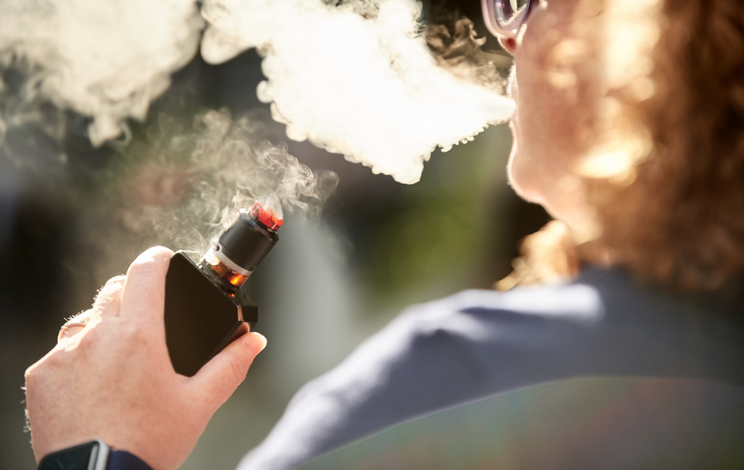NNA: Abolishing pointless EU-derived regulations would make UK vaper’s life easier
March 29, 2022

In response to the newly appointed Minister for Brexit Opportunities and Government Efficiency, Jacob Rees-Mogg’s call for public suggestion to abolish petty regulations as the United Kingdom has left the EU, the New Nictone Alliance (NNA) has shared its recommendations to ease regulations on vape.
In its letter to the Minister, NNA said: “Abolishing the pointless EU-derived regulations would not only be popular by making life easier for millions of UK vapers but would also help the government in its goal of achieving smokefree status for the UK by 2030.”
NNA urged the Minister to eliminate pointless restrictions on vaping tank and refill container sizes, remove the 20mg/ml limit on the strength of nicotine e-liquid, and lift the EU-imposed ban on snus.
Recommendations stated by NNA in its letter to Jacob Rees-Mogg:
Eliminate pointless restrictions on vaping tank and refill container sizes
The European Union Tobacco Products Directive limits the size of vaping product tanks to 2 millilitres and refill containers to 10 millilitres. It is difficult to establish any reliable origin or rationale for this measure – and in practice, there is none. Recitals 40-42 of the EU TPD reflect a reasonable approach to risk arising from containers of liquids that could be toxic if ingested: use well-engineered and chil resistant containers; warn of the hazard and provide information on what to do if the liquid is swallowed. This is the usual approach for managing hazardous substances in the home, for example, cleaning fluids, medicines and fuels – and there are international standards for child-resistant containers.
Limiting the size of the container to some notionally sub-lethal dose is not an approach widely used for hazardous products and not mentioned in the recitals to the TPD. Nicotine ingestion is rarely lethal, partly because it triggers vomiting, and it is not as toxic as widely assumed. The problem with smaller containers and tank sizes is that, for obvious physical reasons, these generate more refilling activity, entail a greater likelihood of running out of liquid, more chance of spillage, and create more waste. It is made more difficult by the insistence in the EU Tobacco Products Directive on small container sizes. It is a form of pointless regulatory harassment of vapers, and no
one has been able to identify any public health or other benefits.
Remove the 20mg/ml limit on the strength of nicotine e-liquid
The government should raise the European Union limit on nicotine concentration in vaping liquids to allow vaping products to compete more effectively with cigarettes. This change is necessary to provide a satisfying alternative to smoking in a compact format. The limit is arbitrary and based on a nonsensical quantity (nicotine liquid strength) and does not do what it was supposed to do -set a level playing field for competition between smoking and vaping. The Tobacco Products Directive limits nicotine concentrations in e-liquids to 20mg/ml (about 2% nicotine concentration). This legacy European Union rule provides no benefits or consumer protections but provides unjustified regulatory protection to cigarettes on sale in the UK based on faulty reasoning.
The misunderstanding was pointed out to the Commission when the legislation was crafted, including by several of those whose science the Commission cited to justify its approach. The critics’ evidence-based arguments were ignored, and the Directive proceeded unchanged, cementing in an advantage to the cigarette trade.
Lift the EU-imposed ban on snus.
The government should lift the European Union ban on snus (oral tobacco). The lowest smoking rate in Europe (7%) is in Sweden, where many nicotine users use snus, a form of smokeless tobacco. In Norway, daily smoking among young women (age 16-24) reached 1% in 2019 and remained at that level in 2021. This was a fall from 17% to 1% prevalence over just ten years as almost all nicotine use in this age group has migrated to snus. This is already a true “smoke-free generation”, and it has been achieved very quickly and by consent rather than by force. The most recent Global Burden of Disease (GBD) study found no excess mortality, oral cancer, ischemic heart disease or stroke risk for smokeless tobacco users in Sweden and Norway,ix and the 2016 GBD concluded: “for snus or snuff, we did not find sufficient evidence of an RR greater than one for any health outcomes.
However, despite no discernible health risk, the EU Tobacco Products Directive bans snusx though allows cigarettes to be ubiquitously available. This product has been highly successful in reducing smoking to low levels in Scandinavia, notably in Sweden and Norway. Both countries are exempt from the EU-wide ban even though both are part of the European Economic Area, and therefore lifting the ban would not be divergent with the rules of the EU internal market.
To maximise the potential of tobacco harm reduction, it is essential to have a diverse range of smokefree options that provide for different tastes, different points in a transition to smoke-free status and use in different settings. Even if the interest in snus turns out to be limited (we cannot know this while it is banned), there is no reason to stop any smoker from choosing snus as an alternative to smoking. The snus ban has no basis in science, policy or ethics and is essentially a violation of consumer rights.
“We sincerely hope you will consider our suggestions for EU regulations which the UK can do without
post-Brexit and would welcome any questions you may have or requests for further information,” NNA concludes.
